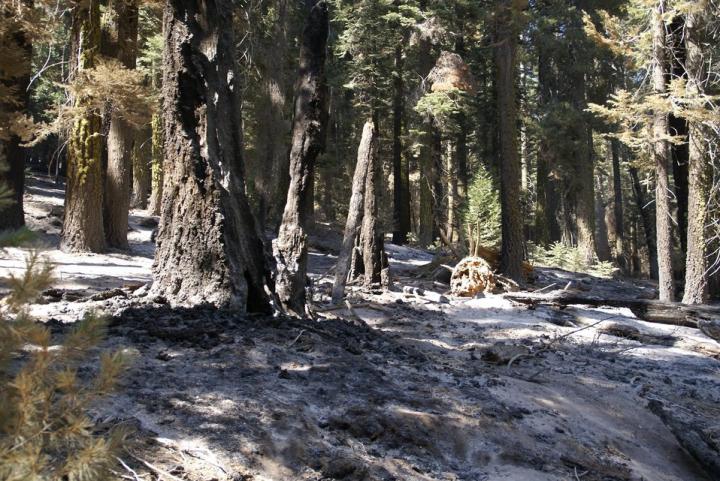Whole plant and animal communities can be put at risk by different types of habitat loss

Credit: Louis Haynes
An international study has revealed new evidence to help understand the consequences of habitat loss on natural communities.
The research, co-authored by Swansea University’s Dr Miguel Lurgi, shows the specific ways in which human activities destroy habitat is a key factor to understanding the effects of such destruction on the stability and functioning of biological communities.
The paper, published in scientific journal Nature Communications, asks whether putting the focus solely on species diversity may overlook other facets of the way biological communities respond to habitat destruction.
Daniel Montoya, researcher at the Theoretical and Experimental Ecology Station in Moulis, France, also a co-author, said: “Ecologists and practitioners tend to assess the impact of human activities on biodiversity by measuring the extinction rates of species.
“However, biodiversity comprises elements other than single species, such as the interactions between species and their stability over time and space.
“These additional, and sometimes overlooked, properties are key to the functioning of ecosystems. They are the missed component of biodiversity loss that accompanies or precede species extinctions.”
This study found that the specific ways in which habitat is lost is important to the response of biodiversity.
Dr Montoya added: “Natural habitats can be destroyed randomly or in a clustered way – for example, by the construction of a road or the creation of new urban areas, respectively. The spatial configuration of this loss differentially constrains the mobility of individual animals, which further impacts biodiversity and the stability of populations in the remaining fragments of intact habitat.”
The researchers say a logical question now emerges – how is habitat destroyed in real landscapes around the world?
“It depends on the spatial scale we are looking at. Yet, we explored several scenarios of habitat loss and our results suggest that community responses are approximately gradual and predictable based on degree of spatial autocorrelation of the lost habitat,” said Dr Lurgi.
This study relates to recent research exploring changes in local diversity following global change, currently under a subject of heated debate.
“We suggest that, irrespective of a positive, negative or neutral change in local diversity, spatial patterns of habitat loss largely influence the structure and dynamics of biodiversity in very different, contrasting ways.”
Dr Lurgi, a lecturer at Swansea’s Department of Biosciences, previously worked at the renowned CNRS in France and became involved in the paper as part of his own research focusing on the disassembly dynamics of ecological networks.
The authors hope their findings will be used to help inform environmental science and policy making in the future. They would like to see aspects of community structure and stability as well as the spatial configuration of habitat loss incorporated into conservation planning.
Dr Lurgi added: “I think it is important to develop theory and models to help us understand these effects and allow us to come up with better ways to tackle habitat loss and other sources of anthropogenic change to better conserve biodiversity.”
###
Media Contact
Kathy Thomas
[email protected]
Original Source
http://www.
Related Journal Article
http://dx.




